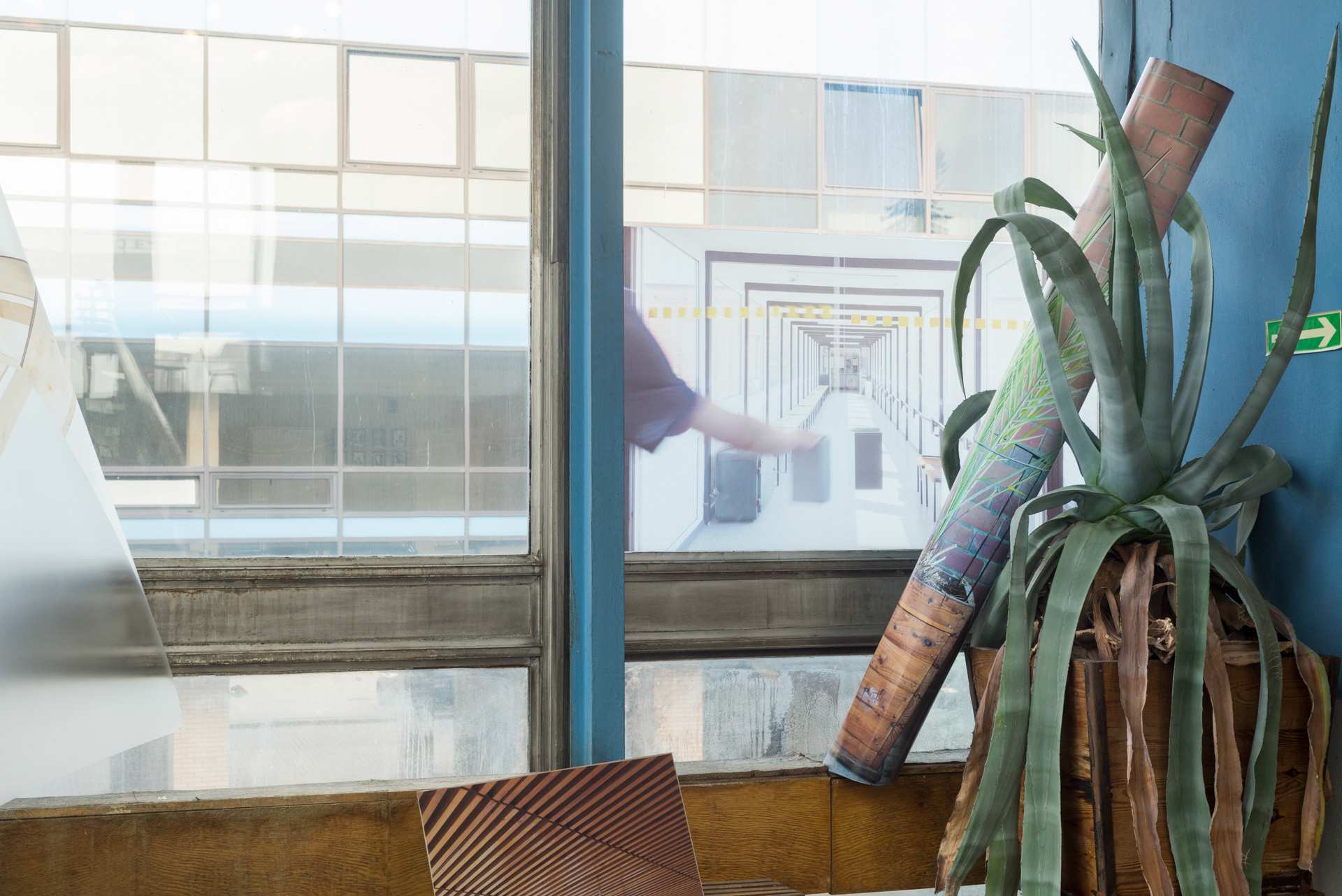Krypta | The Crypt (2017)

PL:
W tym samym czasie, kiedy powstawały budynki wydziału chemii Uniwersytetu Wrocławskiego, budowany był kampus Uniwersytetu Mikołaja Kopernika – w tym również budynek przeznaczony dla chemików. Wrocławskie Audytorium, wycofane z użytkowania, przed przebudową uratowało wpisanie na listę zabytków. Toruńska „chemia”, ciągle wykorzystywana, pozostała w dużej mierze niezmieniona ze względu na brak funduszy. Cały czas krąży nad nią jednak widmo „remontu”, który prawdopodobnie będzie oznaczał zniszczenie oryginalnej i wartościowej tkanki. Zabytkowe, modernistyczne wnętrze pozostanie jedynie utrwalone na zdjęciach.
W tym samym czasie, kiedy powstawały budynki wydziału chemii Uniwersytetu Wrocławskiego, budowany był kampus Uniwersytetu Mikołaja Kopernika – w tym również budynek przeznaczony dla chemików. Wrocławskie Audytorium, wycofane z użytkowania, przed przebudową uratowało wpisanie na listę zabytków. Toruńska „chemia”, ciągle wykorzystywana, pozostała w dużej mierze niezmieniona ze względu na brak funduszy. Cały czas krąży nad nią jednak widmo „remontu”, który prawdopodobnie będzie oznaczał zniszczenie oryginalnej i wartościowej tkanki. Zabytkowe, modernistyczne wnętrze pozostanie jedynie utrwalone na zdjęciach.
Obie realizacje to architektura projektowana od podstaw, po najmniejszy detal, ale w założeniu również seryjna i powtarzalna. Późny modernizm lat 60. i 70. wytworzył spójny, charakterystyczny język materiałów, przestrzeni i form. Wykorzystałem to, żeby przenieść materialny obraz budynku, który prawdopodobnie straci oryginalny kształt (toruńska „chemia”) i nałożyć go na budynek, który w swoim kształcie przetrwa. W formie fotograficznej instalacji chciałem dokonać inkorporacji jednego budynku przez drugi, stworzyć swego rodzaju kryptę, będącą wyrazem niezgody na proces żałoby po przewidywanej śmierci. Instalacja ta ma być czymś pomiędzy składem niepotrzebnych, zapomnianych przedmiotów (czym od kilku lat jest wrocławskie Audytorium), a zakamarkami ludzkiej pamięci, z której wyciągamy zdeformowane wspomnienia i obrazy tego, czego już nie ma.
praca została zrealizowana w ramach 15. Przeglądu Sztuki "SURVIVAL", Wrocław, 23-27.06.2017
ENG:
At the same time when the buildings of the faculty of chemistry were being built in Wrocław, the whole Nicolaus Copernicus University campus in Toruń was constructed – including faculty of chemistry building. The Auditorium in Wrocław, which was the site of 15th SURVIVAL Art Review, was saved from demolition by listing as a architectural heritage, while the faculty of chemistry in Toruń, my hometown, is still used but remains mostly untouched due to lack of money for so called renewal. There still is the danger of a refurbishment, after which the historic and valuable late-modernist interior could only be seen on photographs.
Both buildings, in Wrocław and Toruń, are examples of architecture designed in the smallest details, however also serial and repeatable. The late-modernism of the 60’s and 70’s generated very cohesive and characteristic language of materials, spaces and forms. I used this situation to create a photographic installation, in which I depicted details and parts of the chemistry faculty in Toruń and put the prints inside the Chemistry Auditorium in Wrocław. My intension was to create a kind of crypt, in which one building (which probably will be disastrously refurbished) could be hidden and saved as images inside the building, which will survive as a heritage site. The installation was meant to look like something between a warehouse where forgotten and needless objects are kept, and recesses of human memory, from which we drag deformed and incomplete images.
the project was produced on behalf of the 15th "SURVIVAL" Art Review, Wrocław, Poland, 23-27.06.2017
At the same time when the buildings of the faculty of chemistry were being built in Wrocław, the whole Nicolaus Copernicus University campus in Toruń was constructed – including faculty of chemistry building. The Auditorium in Wrocław, which was the site of 15th SURVIVAL Art Review, was saved from demolition by listing as a architectural heritage, while the faculty of chemistry in Toruń, my hometown, is still used but remains mostly untouched due to lack of money for so called renewal. There still is the danger of a refurbishment, after which the historic and valuable late-modernist interior could only be seen on photographs.
Both buildings, in Wrocław and Toruń, are examples of architecture designed in the smallest details, however also serial and repeatable. The late-modernism of the 60’s and 70’s generated very cohesive and characteristic language of materials, spaces and forms. I used this situation to create a photographic installation, in which I depicted details and parts of the chemistry faculty in Toruń and put the prints inside the Chemistry Auditorium in Wrocław. My intension was to create a kind of crypt, in which one building (which probably will be disastrously refurbished) could be hidden and saved as images inside the building, which will survive as a heritage site. The installation was meant to look like something between a warehouse where forgotten and needless objects are kept, and recesses of human memory, from which we drag deformed and incomplete images.
the project was produced on behalf of the 15th "SURVIVAL" Art Review, Wrocław, Poland, 23-27.06.2017










